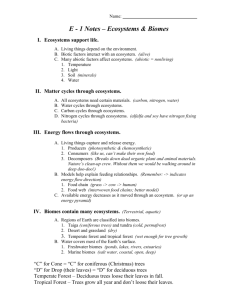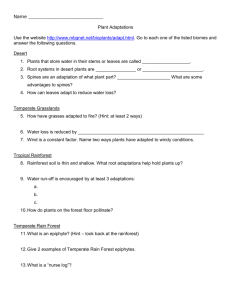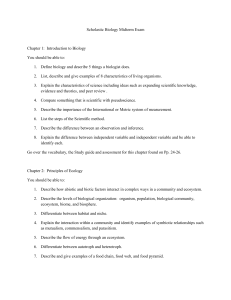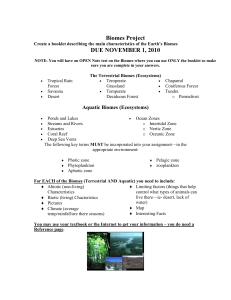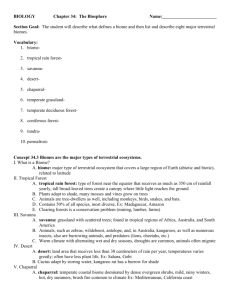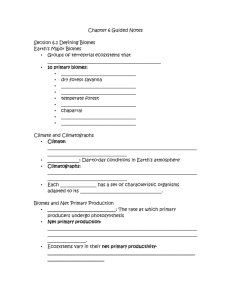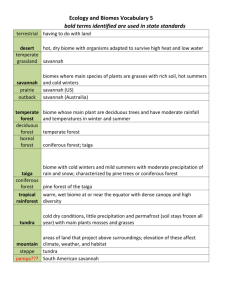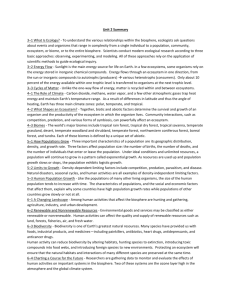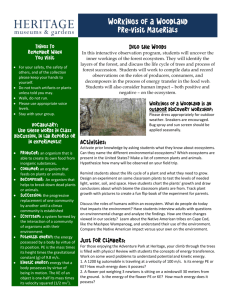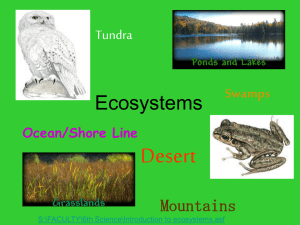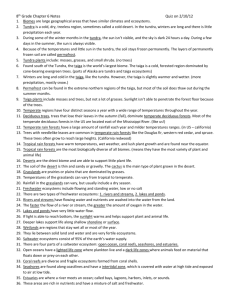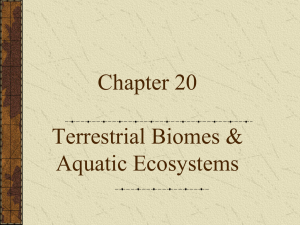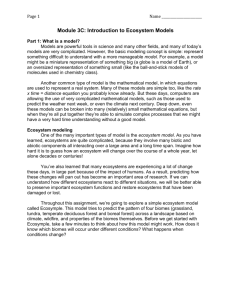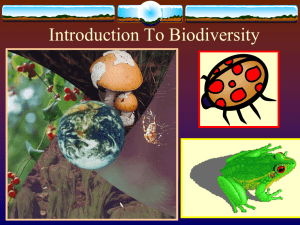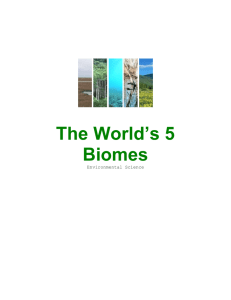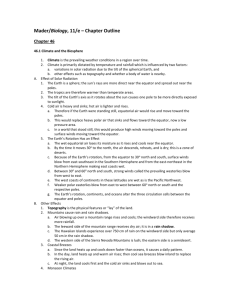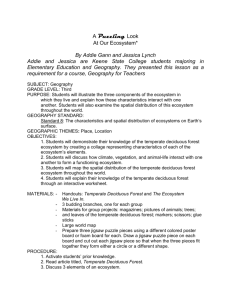studyguidechpt20 Key
advertisement
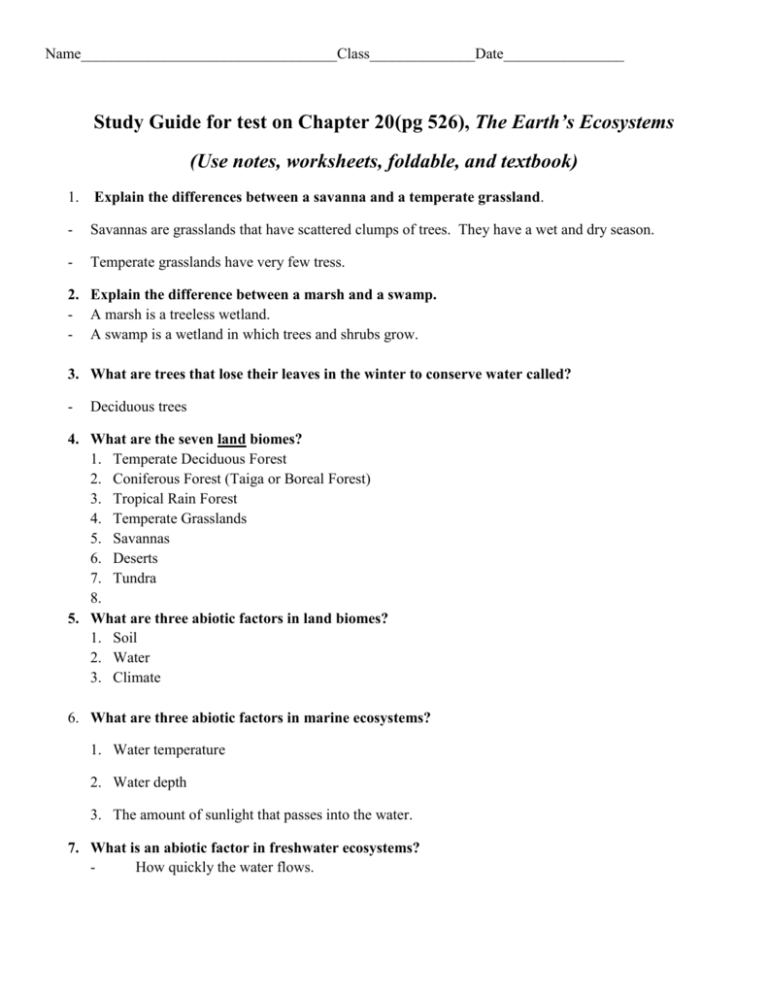
Name__________________________________Class______________Date________________ Study Guide for test on Chapter 20(pg 526), The Earth’s Ecosystems (Use notes, worksheets, foldable, and textbook) 1. Explain the differences between a savanna and a temperate grassland. - Savannas are grasslands that have scattered clumps of trees. They have a wet and dry season. - Temperate grasslands have very few tress. 2. Explain the difference between a marsh and a swamp. - A marsh is a treeless wetland. - A swamp is a wetland in which trees and shrubs grow. 3. What are trees that lose their leaves in the winter to conserve water called? - Deciduous trees 4. What are the seven land biomes? 1. Temperate Deciduous Forest 2. Coniferous Forest (Taiga or Boreal Forest) 3. Tropical Rain Forest 4. Temperate Grasslands 5. Savannas 6. Deserts 7. Tundra 8. 5. What are three abiotic factors in land biomes? 1. Soil 2. Water 3. Climate 6. What are three abiotic factors in marine ecosystems? 1. Water temperature 2. Water depth 3. The amount of sunlight that passes into the water. 7. What is an abiotic factor in freshwater ecosystems? How quickly the water flows. 8. What are the main differences between a coniferous forest(taiga) and a temperate deciduous forest? The coniferous forest contains trees that have needles and produce seeds in cones. Whereas, the temperate deciduous forests’ trees have leaves that change color and fall off during winter. 9. Which land biome has the greatest diversity of plants and animals? - Tropical rainforest 10. What biome is permafrost found in? - Tundra 11. What is permafrost? - the layer of soil beneath the surface that stays frozen all the time 12. What biome is found on mountain tops(above the tree-line)? Tundra 13. Describe the characteristics of an estuary. Estuaries are areas where fresh water from rivers and streams spills into the ocean. In other words, it is an area where freshwater and salt water mix. Therefore, the amount of salt is always changing. Plants and animals have to constantly adapt to the changing concentrations of salt in the water to survive. 14. Name the characteristics of a desert. has little or no plant life; plants live far apart long periods without rain extreme temperatures; usually found in hot climates 15. How do plankton get food? - Plankton use photosynthesis to make their own food because they are producers. 16. Explain the difference between a marine ecosystem and a freshwater ecosystem. A marine ecosystem contains salt water, whereas a freshwater ecosystem does not. Each ecosystem has different zones. The marine ecosystems consist of the intertidal zone, neritic zone, oceanic zone, and benthic zone. The freshwater ecosystems consist of the littoral zone, open-water zone, and deep-water zone. 17. Describe the major factors used to classify biomes. - climate, temperature, amount of rainfall. 18. What 2 biomes receive the least amount of rainfall? - Tundra & Desert 19. What biomes are closest to the equator? - Tropical Rainforest & Savanna 20. Name and describe the 3 types of symbiotic relationships. 1. Mutualism- both organisms benefit 2. Commensalism- one organism benefits, and the other is not affected 3. Parasitism- one organism benefits, and the other is harmed 21. Define decomposer an organism that obtains nutrients by breaking down the remains of dead organisms


